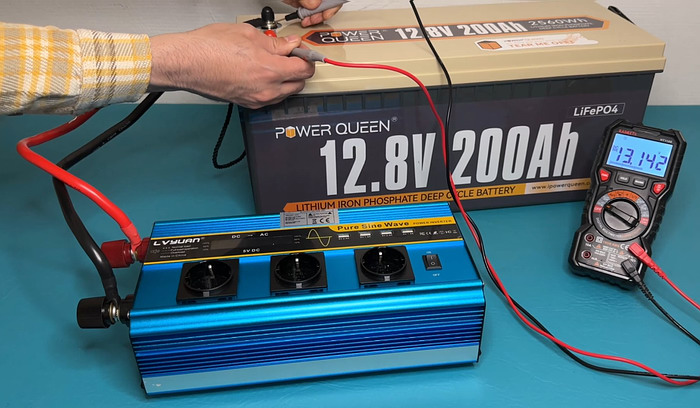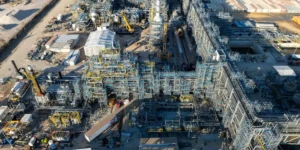The Bridge Between Energy Conversion and Storage

Battery inverters, as key devices in modern energy systems, play an important role in converting direct current (DC) to alternating current (AC). Battery inverters play an irreplaceable role in renewable energy generation, energy storage systems, emergency power and other fields. In this article, we will deeply analyse the working principle, types, applications and future development trend of battery inverters, in order to provide readers with a comprehensive and in-depth understanding.
Working Principle of Battery Inverter
The working principle of battery inverter is based on the development of power electronics technology, and its core function is to convert DC power into AC power. Inside the battery inverter, through a series of complex circuit structures and workflows, the input DC power is filtered, chopped, inverted and other steps, and finally output stable AC power. This process, the battery inverter needs to ensure the efficiency and stability of energy conversion to meet the needs of different loads.
Types and characteristics of battery inverters
According to the different output waveforms, battery inverters can be divided into various types such as square wave inverters, sine wave inverters and modified sine wave inverters. Square wave inverter output waveform is square wave, which is suitable for some loads with low requirements on waveform; sine wave inverter outputs waveform close to sine wave, which is suitable for loads with high requirements on waveform, such as precision instruments, household appliances, etc.; corrected sine wave inverter is between the two, with output waveform between square wave and sine wave.
Different types of battery inverters have different advantages and disadvantages and applicable scenarios. Square wave inverters have lower cost but poorer waveform quality, which may cause damage to some loads; sine wave inverters have high waveform quality but also relatively high cost; and modified sine wave inverters balance the cost and waveform quality to some extent. When choosing a battery inverter, you need to weigh the specific application scenarios and needs.
Application areas of battery inverters
Battery inverters have a wide range of applications in several fields. In the family field, battery inverters can be used as a backup power source to provide a stable power supply for household appliances; in the industrial field, battery inverters can provide uninterrupted power support for equipment on the production line; in the transport field, battery inverters can provide power conversion and storage functions for electric vehicles, ships and other means of transport.
In addition, battery inverters play an important role in solar power generation systems, wind power generation systems, and energy storage systems. In these systems, battery inverters are able to convert the DC power generated by renewable energy sources into AC power, which can be supplied to the power grid or loads. At the same time, battery inverters can also realise the two-way flow of energy between the grid and the energy storage system, improving the flexibility and reliability of the whole system.
Battery inverter purchase and installation
When shopping for a battery inverter, Topbull inverters are certainly a brand worth considering. Firstly, you need to choose the right inverter power according to the power demand of the load. Topbull inverters offer a wide range of power options that can meet the needs of different loads. Secondly, you need to pay attention to the efficiency and stability of the inverter.
Topbull inverters enjoy a good reputation in the industry for their high efficiency and stable performance, which can ensure the quality and reliability of power conversion. In addition, Topbull as a well-known brand, its after-sales service system is perfect, can provide users with timely and professional technical support and maintenance services, so that users in the process of using more peace of mind.
When installing a battery inverter, certain steps and precautions need to be followed. Firstly, you need to determine the installation location of the inverter to ensure that it is well ventilated and away from heat sources and humid environments; secondly, you need to correctly connect the wires between the battery, the load and the inverter in accordance with the instructions; and finally, you need to carry out the system debugging and testing to ensure that the inverter is able to work properly and meet the load requirements.
The future development trend of battery inverter
With the rapid development of new energy industry and the continuous progress of power electronics technology, battery inverter technology will also usher in a broader development prospects. In the future, battery inverters will develop towards intelligence, high efficiency, miniaturisation and other directions.
In terms of intelligence, battery inverter will integrate more intelligent control algorithms and sensor technologies to achieve more accurate energy management and fault warning functions. In terms of high efficiency, with the application of new materials and processes, the energy conversion efficiency of battery inverters will be further improved, reducing energy loss and costs. In terms of miniaturisation, with the improvement of integration and packaging technology, the size and weight of battery inverters will be further reduced, making them easy to carry and install.
At the same time, the application of battery inverters in the field of new energy will be more extensive. With the continuous development of renewable energy power generation and energy storage technologies, battery inverters will become a key bridge connecting renewable energy sources and power grids, promoting the rapid development of the new energy industry.




